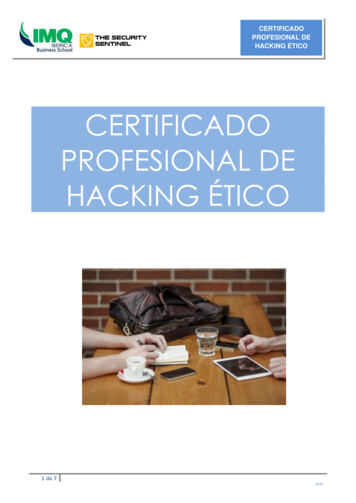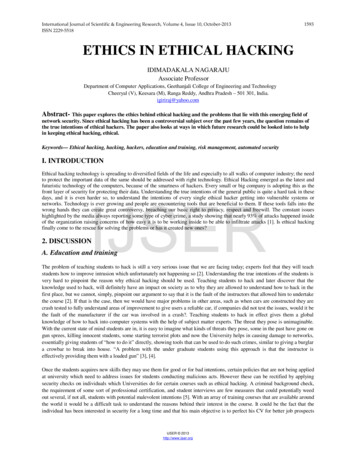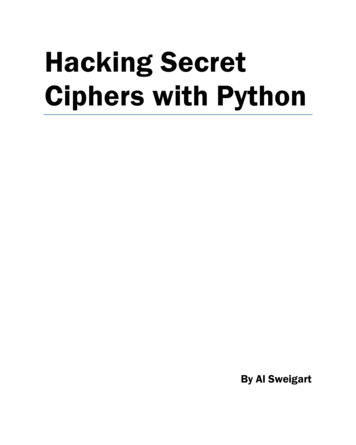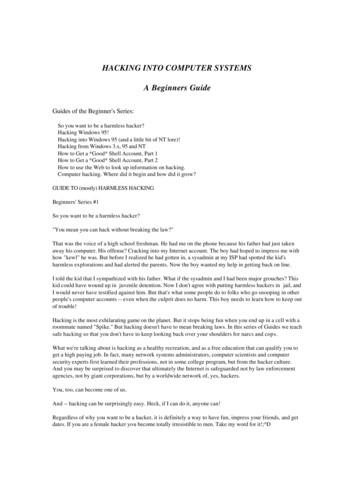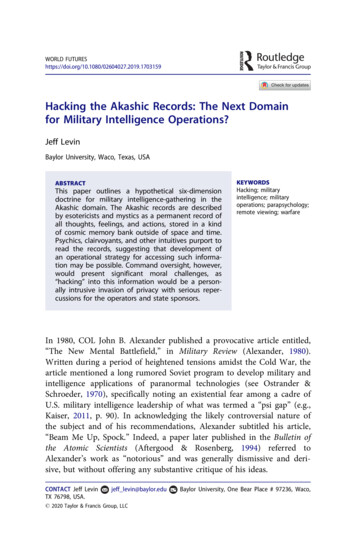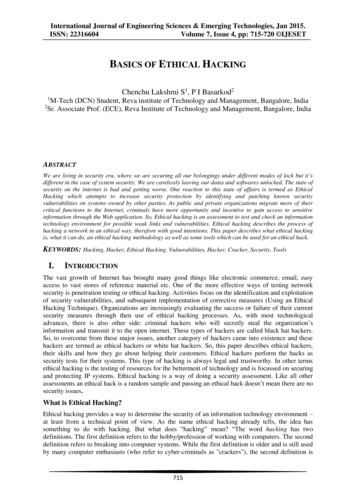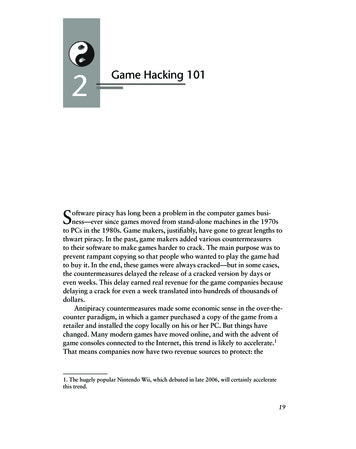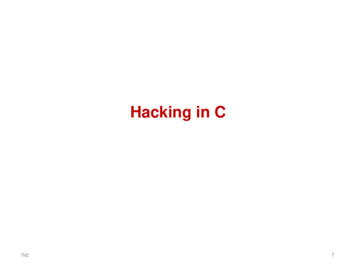
Transcription
Hacking in Chic1
About this course: topics & goals Standard ways in which software can be exploited– understanding how such attacks work– understanding what makes these attacks possible– doing some attacks in practice Root cause analysis: why are things so easy to hack? This involves understanding– programming languages, compilers, and operating systems,and the abstractions that they provide– the languages, representations, and interpretations involved– the potential for trouble – in the form of software vulnerabilities all this introduceshic2
Hacking in C security problems in machine code compiled from C( ) source coderunning on standard CPU and operating system. hicto understand this, we need to know how– the data representations involved– the memory management that the programmer has to do3
Prerequisites Imperatief Programmeren– we won’t use C , but C– biggest change: using printf instead of ? Processoren– what is the functionality that a typical CPU offers, on which wehave to run our software written in higher-level languages?Eg. fetch-execute cycle of the CPU, with Program Counter (PC)registers where in the code we are, which is modified for a JUMPinstruction and incremented for the other instructionshic4
Lectures & lab sessions Lectures Mondays 13:45-15:30 in HG00.304 Lab sessions Thursdays 10:45-12:30 in HG00.137 & HG00.625Aanstaande woensdag: als je al bekend met Linux command linega dan naar HG00.625 hicAll course material will be onhttp://www.cs.ru.nl/ erikpoll/hic5
Lab exercisesWeekly lab session with weekly programming/hacking exercise Exercises to be done in pairs Doing the exercises is obligatory to take part in the exam; Exercises will be lightly graded to provide feedback,with nsi-regeling:you can have only one exercise niet-serieus-ingeleverd You learn stuff in the exercises that you won't learn at the lectures,and vv. Beware: exercises of one week will build on knowledge & skills fromthe previous week Also: turning up for the lab sesions might be crucial to sort outpractical problems (with C, gcc, Linux, .)hic6
Lab exercisesWe use C as programming language, not C Linux from the command line aka shell the compiler gccSo no fancy graphical user interfaces (GUIs)for the operating system (OS) or the compilerWhy? GUIs are nice, but hide what OS and compiler are doing the command line is clumsy at first,– using commands instead of pointing & clickingbut gives great power– we can write shell scripts: programs that interact with the OShic7
‘to hack’NB several meaning and connotations, incl.1. To write software in a clever way– to really exploit all the capabilities a system offers2. To break into a computer system.3. To fix some problem in a quickly & ugly wayFocus of this course 1 & 2.hic8
How do you break into a computer system?1. Using user credentials – username/passwordHow do you get those?– default passwordshic9
Default passwords exploited by Mirai botnethic10
Default passwords exploited by Mirai botnethic11
How do you break into a computer system?1. Using user credentials – username/passwordHow do you get those?– default passwords– phishing– brute forcing– eavesdropping, on unsecured network connection, with keylogger hardware or software keylogger– using stolen password files which may need to be brute forced, if passwords are hashed– .2 Using flaws in the software– Focus of this course & web security next quarterhic12
Security problems in softwareTerminology can be confusing:(security) weakness, flaw, vulnerability, bug, error, coding defect, .Important distinction:1. security weakness/flaw:something that is wrong or could be better2. security vulnerabilityweakness/flaw that can actually be exploited by an attacker,This requires the flaw to be1. accessible - attacker has to be able to get at it2. exploitable – attacker has to be able to do some damage with itEg by unplugging your network connection, many vulnerabilities become flawsWarning: there is no standardised terminology for the distinction above!hic13
Software security prices (2015)hic14
design vs implementation flawsSoftware vulnerabilities can be introduced at different “levels” design flawsfocus of– fundamental error in the designthis course implementation flaws or coding error– introduced when implementingThe precise border is not preciseit can be debatable whether a flaws is a design or implementation flawTo understand implementation flaws, we need to look 'under the hood'of how a programming language workshic15
To understand implementation flawshic16
‘to hack’ NB several meaning and connotations, incl. 1. To write software in a clever way –to really exploit all the capabilities a system offers 2. To break into a computer system. 3. To fix some problem in a qui
